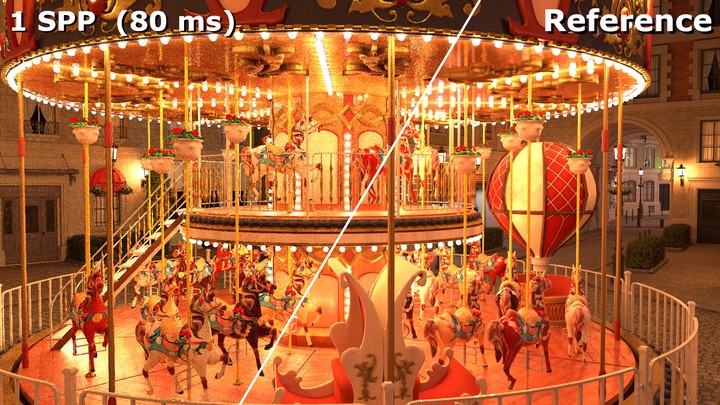Generalized Resampled Importance Sampling: Foundations of ReSTIR

Abstract
As scenes become ever more complex and real-time applications embrace ray tracing, path sampling algorithms that maximize quality at low sample counts become vital. Recent resampling algorithms building on Talbot et al.’s [2005] resampled importance sampling (RIS) reuse paths spatiotemporally to render surprisingly complex light transport with a few samples per pixel. These reservoir-based spatiotemporal importance resamplers (ReSTIR) and their underlying RIS theory make various assumptions, including sample independence. But sample reuse introduces correlation, so ReSTIR-style iterative reuse loses most convergence guarantees that RIS theoretically provides.
We introduce generalized resampled importance sampling (GRIS) to extend the theory, allowing RIS on correlated samples, with unknown PDFs and taken from varied domains. This solidifies the theoretical foundation, allowing us to derive variance bounds and convergence conditions in ReSTIR-based samplers. It also guides practical algorithm design and enables advanced path reuse between pixels via complex shift mappings.
We show a path-traced resampler (ReSTIR PT) running interactively on complex scenes, capturing many-bounce diffuse and specular lighting while shading just one path per pixel. With our new theoretical foundation, we can also modify the algorithm to guarantee convergence for offline renderers.